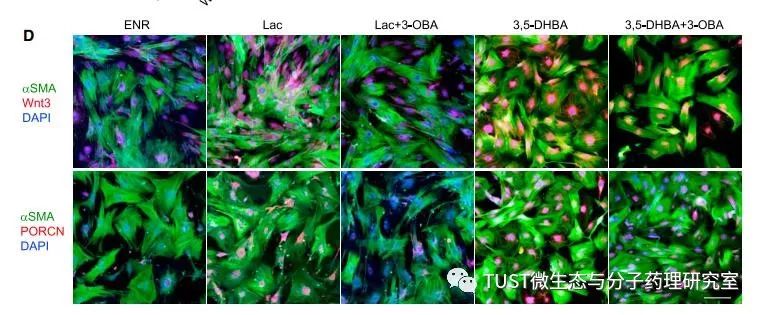01
Introduction to the background of the article
BACKGROUND INTRODUCTION
The intestinal stem cells are located at the base of the intestinal mucosa, that is, the intestinal basal crypt is the cell bank of the intestinal stem cells. Under normal circumstances, the intestinal stem cells located at the base of the crypt continue to migrate to the top of the crypt (in the direction of the intestine). The whole migration process is about 3-5 days. During the migration process, the intestinal stem cells will differentiate into different intestinal mucosal cells. Intestinal mucosal barrier integrity is essential for ensuring nutrient absorption, resisting intestinal pathogen invasion and maintaining intestinal mucosal immunity, and is essential for the recovery of inflammatory bowel disease. Unlike other stem cells, intestinal stem cells coexist with intestinal bacteria, so intestinal bacteria may affect the regeneration and development of epithelial cells. The short-chain fatty acids and lactic acid produced by the intestinal flora are important sources of energy for the host. In many aspects of immune and metabolic functions, G-protein coupled receptors are essential for activating signaling molecules. Some studies have begun to seek a relationship between symbiotic metabolites and G protein-coupled receptors.
2018, South Korea's Mi-Na Kweon et al., In "Cell Host & Microbe" magazine (IF = 17.872; biota 1) published a report entitled "Microbiota-Derived Lactate Accelerates Intestinal Stem -Cell-Mediated Epithelial Development" Article.
02
Main method used
METHODS
1. In situ hybridization and immunofluorescence
2. Immunohistochemistry
3. Real-time PCR
03
Summary of the main contents of the article
ABSTRACT
Symbiotic bacteria play an indispensable role in intestinal homeostasis, but the underlying mechanisms remain elusive. To elucidate the role of lactic acid-producing bacteria ( LAB ) in intestinal stem cell ( ICC )-mediated epithelial development, the authors fed mice with LAB -type commensal bacteria such as bifidobacteria and lactobacilli . The results showed that feeding LAB -type commensal bacteria significantly increased the number of intestinal stem cells, Paneth cells and goblet cells. Lactic acid stimulates ISC proliferation by Wnt/β-catenin signaling by Paneth cells and intestinal stromal cells . In addition, Lactobacillus plantarum has low lactate dehydrogenase activity and lacks lactic acid production, and the ability to induce ISC proliferation is weak. Pretreatment with LAB -type symbiotic bacteria or lactic acid can reduce intestinal damage in mice caused by combination of radiation and chemotherapeutic drugs, whereas ISC- mediated observation can be observed in mice lacking the lactic acid G- protein coupled receptor Gpr81 . Impaired epithelial development, these results indicate that lactic acid produced by LAB -type commensal bacteria promotes ISC- mediated intestinal epithelial development via the G- protein coupled receptor Gpr81 .

Marshmallow Candy,Marshmallow Gummies,Easter Marshmallow Candy,Cotton Candy Marshmallow
Montreal Shantou Food Co., Ltd , https://www.montrealsnack.com